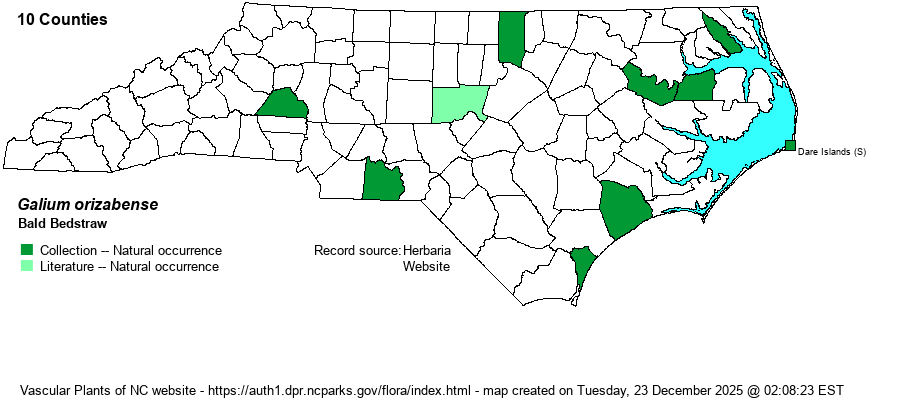| Author | Hemsley | |
| Distribution | Widely scattered specimens from the Coastal Plain and Piedmont, but likely overlooked or poorly collected, and with a distribution at the present time that cannot be delineated with any certainty.
The global range is not well known, but it is a Southern species that has been poorly collected. Records range north to southern VA and central TN south to FL and LA.
| |
| Abundance | Seemingly quite rare, but too few specimens to be sure. Very few biologists would recognize the species, and perhaps most records are simply the result of collections of "G. pilosum" that have since been re-examined and found to be this cryptic species. The species is not on the NCNHP's Watch List, and as the taxon is so poorly known, and with a range potentially covering 2/3rds of the state, the website editors are not suggesting Watch List either. | |
| Habitat | This taxon grows in various forest types and moistures, of little help in surveying for it. Weakley (2018) says: "Mesic forests, maritime forests, swamp edges". | |
| Phenology | Blooms from May to August, and fruits in the same period. | |
| Identification | This species is very similar to G. pilosum in that it has 4 leaves per whorl, with elliptical leaves. This species is more sprawling, leaning to decumbent, as opposed to more erect in G. pilosum; the leaves are narrowly elliptic and 2-4 times longer than wide, as opposed to only 1.5-2.5 times longer than wide in the common species. Most importantly, G. orizabense has smooth stems, as opposed to pubescent or hairy stems in G. pilosum. | |
| Taxonomic Comments | This species was included within G. pilosum in RAB (1968). Weakley (2018) gives two subspecies for it, with the nominate one occurring south of the U.S., and only ssp. laevicaule occurring in the U.S.
| |
| Other Common Name(s) | Smoothstem Bedstraw | |
| State Rank | [S2?] | |
| Global Rank | G5? | |
| State Status | | |
| US Status | | |
| USACE-agcp | | |
| USACE-emp | | |

